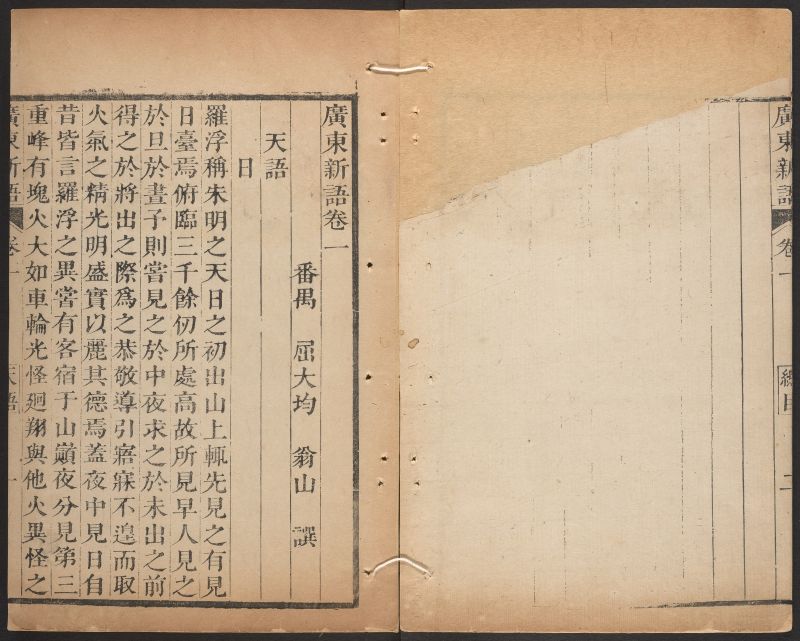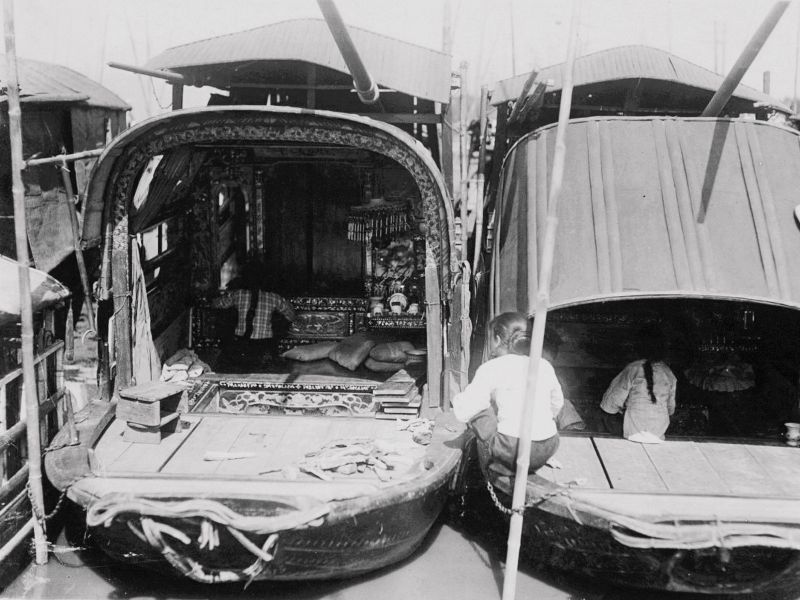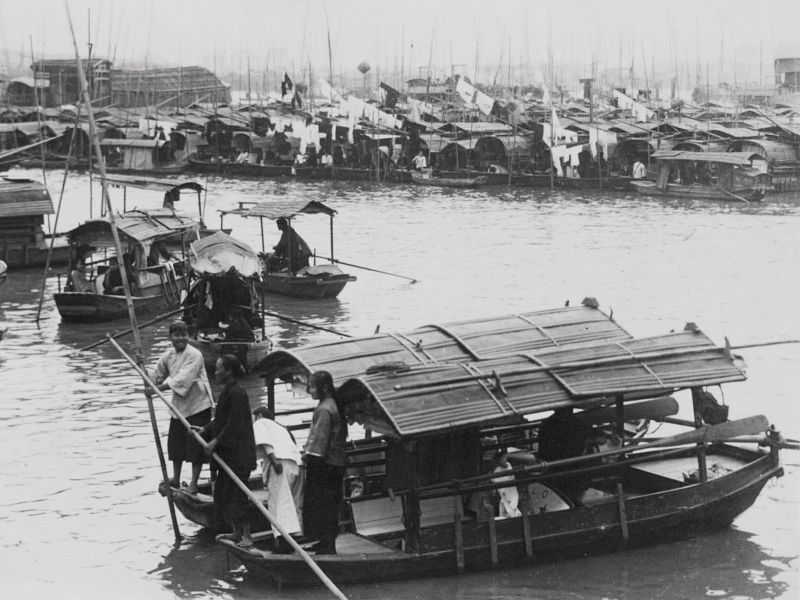Ou Ning
The Dàn / Saltwater Planting
疍 are one of the earliest indigenous people of the Pearl River Delta region, pronounced daahn according to Yale romanization of Cantonese, and dan in historical Mandarin phonology, and in ancient literature also known as蜑 (pronounced dan as 疍). They were dark-skinned, skillful swimmers like otters, lived on boats, came and went with the tide, and maintained their livelihood through fishing, pearling in the river and sea, or plundering. During the Qing Dynasty, there were two books, Guangdong Neologism and Collected Narratives from Guangdong recorded that Lo Ting (pronounced Lu Ting in Mandarin, the tribe of half-man, half-fish creature) lived in the area of Lantau Island in today’s Hong Kong, who were the descendants of Lu Xun, the rebel Taoist from the Way of the Five Pecks of Rice (wudou midao, aka the Way of the Celestial Master) in Eastern Jin Dynasty. Their bodies were covered in scales, they thrived on chicken blood, and many females were kidnapped for sex slavery.
Lo Ting was undoubtedly a fictional tribe based on the lowly status of the landless Dan, but contemporary Hong Kong artists like to identify them as the ancestors of the people of Hong Kong in their artistic works. This legend is similar to that of Zhuji Lane 1 in Nanxiong, which is popular among the Guangdong folk, both are "fictional ethnicity" that try to establish political and identity affinity, only that the former adopts a self-barbarization approach and the latter self-gentrification.
The rise of the Lingnan gentry class was attributed to the relocation of the capital in the Song Dynasty—the so-called "Jianyan Nandu" — which meant, on the one hand, the nobles from the Central Plains brought the civilized enlightenment for the barbarians in the South; on the other hand, the collapse of the Northern Song Dynasty from the Jin siege, urged the new-founded Southern Song Dynasty to develop the South once it lost the northern sustenance. The huge demand for rice in the Yangtze River Delta, where the capital was based, accelerated trade in the Pearl River Delta and rice cultivation became profitable. Dikes were built where the West River, North River and East River merged into the Pearl River, then sand flat 2 development became popular.
Saltwater cultivation was invented to build rice fields around the sea, and it was generally used on the saline-alkali land within the diked seashore, with rice as the main crop. To this day, there are still farmers in the coastal areas of Guangdong who are keen to improve this local farming method — both to enhance the capacity of seawater rice to withstand severe local weather, such as typhoons, and to develop the business of artificial farming of shrimp. Beginning in the Southern Song Dynasty, some of the Dan people began to settle on land by expanding into farming sand flat and diked seashore. With household registrations, they could obtain qualifications for the imperial examinations, and then through generations, to finally form a large clan.
The intellectuals in the clan began to invoke the legend of Zhuji Lane in the genealogical record and to obtain the legitimacy of settlement rights by establishing affiliations with the central ruling power. Wouldn't rulers of any dynasty have been happy to see the people placed and the community settled in such a peace way? However, the jang mun 3 of history could not let all the lau seui chaai ("flowing wooden boats”, pronounced liu shui chai in Mandarin) land on the shore. Up until the period of modern nation-state establishment, one could still see the floating houses of Dan people in the waters of the Pearl River Delta.
(Translated by Fiona He)
- [1] Zhuji Lane (珠玑巷), pronounced jyu gei hong in Cantonese) is located in Zhuji Town, Nanxiong City, Guangdong Province. Historically, it was a transfer station for people from the Central Plains to move south. The legend of Zhuji Lane says that during the rule of the Duzong Emperor in the Song Dynasty, Xian Chun reign (1265-1274), Luo Gui from Yuzhang County led 97 people to flee to Zhuji Lane, then south to the Pearl River Delta region to settle there. This legend has been widely circulated among Cantonese groups at home and abroad, shaping their clan and ancestral identity. Qu Dajun, the author of Guangdong Neologism, also wrote, “Most of our Guangdong people’s ancestors came from Zhuji Lane in Nanxiong. They moved south to Nanxiong with the relocation of the capital in the Southern Song. In order to commemorate their ancestor, they also named the place they settled Zhuji Lane.”
- [2] Sand flat (沙田),pronounced sa tin in Cantonese, sha tian in Mandarin) refers to the land formed by the accumulation of river silt in the Pearl River Delta.
- [3] From Guangdong Neologism: "The fishnet hanging on the tree grows in the water also called zeng dong(罾戙) or zeng men (罾门) , pronounced jang mun in Cantonese)." The boat-dwelling people should have crossed jang mun when they went ashore.

Qu Dajun,Guangdong Neologism, Da Lai Tang Cang Ban, Kang Xi geng chen(1700) Harvard Yenching Library.

“Floating House of Fan Family”, Manchuria Photographic Artists Association, East Asia Photographic Print Album(54th,Book IV ), January, 4th year of the Showa period (1929)

“Shui Street”, Guangzhou, Manchuria Photographic Artists Association, East Asia Photographic Print Album (54th,Book IV), January, 4th year of the Showa period (1929)